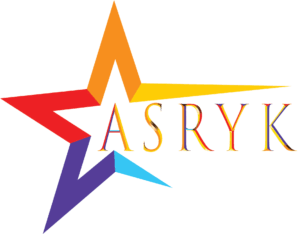Unveiling Monica AI: A Comprehensive Look at the AI Assistant Aiming to Revolutionize Human-Machine Interaction
Artificial intelligence (AI) has permeated various aspects of our lives, transforming how we interact with technology. From voice assistants like Siri and Alexa to chatbots assisting customer service, AI is continuously reshaping the boundaries of human-machine communication. However, a new wave of AI assistants aspires to go beyond simple commands and rudimentary interactions. Enter Monica AI, an ambitious AI project aiming to revolutionize the way we interact with machines by fostering a more natural and personalized experience.
This article delves into the intricacies of Monica AI, exploring its core functionalities, technological underpinnings, potential applications, and the challenges it faces in a rapidly evolving landscape.
Demystifying Monica AI: An AI Assistant Redefining Interaction
Unlike traditional AI assistants that rely on pre-programmed responses or keyword recognition, Monica strives to create a more nuanced and fluid human-machine dialogue. Here’s what sets Monica apart:
- Natural Language Processing (NLP) Proficiency: Monica utilizes advanced NLP techniques to understand the context and intent behind user queries. This enables it to engage in more comprehensive conversations, going beyond literal interpretations.
- Machine Learning (ML) Capabilities: Monica AI leverages machine learning algorithms to adapt and evolve based on user interactions. It personalizes responses by learning user preferences and communication styles.
- Cognitive Reasoning Integration: Monica AI aims to incorporate cognitive reasoning capabilities, allowing it to understand complex concepts and draw connections between information. This fosters a more intelligent and insightful interaction with users.
These combined functionalities paint a picture of an AI assistant that can not only understand instructions but also engage in meaningful conversations, anticipate your needs, and adapt to your behavior.
Unveiling the Engine: A Peek Inside Monica’s AI Architecture
While the specifics of Monica’s architecture remain undisclosed by its developers, some insights can be gleaned from available information. Here’s a potential breakdown of its core components:
- Large Language Model (LLM): Monica AI likely utilizes a powerful LLM trained on a massive dataset of text and code. This LLM serves as the foundation for Monica’s comprehension and response-generation capabilities.
- Contextual Awareness Module: This module analyzes the user’s intent and the context of the conversation. It considers factors like past interactions, user preferences, and the surrounding environment to deliver personalized responses.
- Reasoning Engine: In its advanced stages of development, Monica AI might integrate a reasoning engine that allows it to draw inferences, solve problems, and provide insightful answers to complex questions.
The interplay of these components aims to create a comprehensive understanding of user needs and facilitate a natural, engaging conversation.
Envisioning the Applications: How Monica AI Can Transform Our Lives
Monica’s potential applications are vast and far-reaching, with the potential to touch various aspects of our daily lives. Let’s explore some potential use cases:
- Personalized Productivity Assistant: Monica AI can revolutionize how we manage our schedules and tasks. It can learn your workflow preferences, suggest relevant actions, and proactively remind you of upcoming deadlines.
- Enhanced Customer Service Experience: Monica AI can provide a more personalized and efficient customer service experience. It can understand complex queries, offer personalized solutions, and even navigate troubleshooting procedures with users.
- Intelligent Learning Companion: Monica can empower students and professionals by providing personalized learning experiences. It can adapt to individual learning styles, offer relevant explanations, and even answer complex questions on various topics.
- Seamless Smart Home Integration: Monica AI can act as a central hub for your smart home devices. It can learn your preferences, anticipate your needs, and automate various home functions, creating a truly seamless living environment.
- Personalized Healthcare Companion: Monica AI has the potential to revolutionize healthcare by providing personalized health tracking and support. It can analyze your health data, offer reminders for medication, and even connect you with healthcare professionals for further assistance.
These are just a few examples of how Monica AI can potentially transform various aspects of our lives. As its functionalities and capabilities evolve, the possibilities for integration into our daily routines are limitless.
Challenges and Considerations for Monica’s Future
While Monica holds immense potential, it’s crucial to acknowledge the challenges it faces. These include:
- Ethical Considerations: As AI assistants become more sophisticated, concerns regarding bias, transparency, and user privacy arise. Monica must be developed with robust ethical frameworks in place to ensure responsible use.
- Data Security: Monica’s effectiveness relies heavily on user data. Robust security measures are essential to protect sensitive data and prevent unauthorized access.
- User Trust: Building trust with users is vital for widespread adoption. Monica needs to demonstrate its ability to understand user needs accurately and respect user privacy.
- AI Explainability: As Monica’s decision-making processes become more complex, ensuring user understanding of its reasoning will be crucial.
- AI Explainability: As Monica’s decision-making processes become more complex, ensuring user understanding of its reasoning will be crucial. This calls for advancements in AI explainability to allow users to comprehend how Monica AI arrives at its conclusions.
- Human-AI Collaboration: The ideal future lies in a collaborative relationship between humans and AI assistants. Monica needs to be designed to complement human capabilities, not replace them.
Addressing these challenges head-on is vital for Monica’s journey towards becoming a trusted and valuable AI companion.
The Monica AI Ecosystem: Fostering Innovation and Collaboration
The developers behind Monica recognize the importance of building a robust ecosystem around their AI assistant. Here’s a glimpse into potential aspects of this ecosystem:
- Open-Source Development: Making core components of Monica open-source can foster innovation and attract a wider developer community. This can lead to faster development and a wider range of functionalities.
- Third-Party App Integration: Enabling seamless integration with third-party applications will significantly expand Monica’s capabilities. Users can personalize their experience by integrating apps they use regularly.
- Developer Tools and Resources: Providing developers with extensive tools and resources will encourage them to create custom skills and functionalities for Monica. This can lead to a more diverse and user-tailored experience.
By fostering an open and collaborative ecosystem, Monica AI can leverage the collective intelligence of developers and users to continuously improve and evolve.
The Road Ahead: Navigating the Evolving AI Landscape
The AI landscape is constantly evolving, with new advancements emerging at a rapid pace. Here’s how Monica AI can navigate this dynamic environment to stay ahead of the curve:
- Continuous Learning: Monica’s AI core needs to be continuously trained on new data sets and user interactions. This ensures its ability to adapt to changing user needs and language patterns.
- Integration of Cutting-Edge Technologies: As new AI research and technologies emerge, Monica’s architecture should be flexible enough to integrate these advancements. This could involve incorporating advancements in areas like computer vision, natural language generation, and reasoning algorithms.
- User Feedback Integration: User feedback plays a crucial role in shaping Monica’s development. Mechanisms for gathering and analyzing user feedback should be established to ensure Monica evolves in a user-centric manner.
By prioritizing continuous learning, adaptation, and user-centricity, Monica AI can solidify its position as a frontrunner in the AI assistant revolution.
Conclusion: Monica: A Glimpse into the Future of Human-Machine Interaction
Monica AI presents a compelling vision for the future of human-machine interaction. By moving beyond basic commands and scripted responses, Monica AI aspires to create a more natural, personalized, and intelligent dialogue experience. While challenges remain, Monica’s potential to transform how we interact with technology across various aspects of our lives is undeniable. As AI technology continues to evolve, Monica’s ability to adapt, learn, and collaborate with users will be key determinants of its long-term success.



